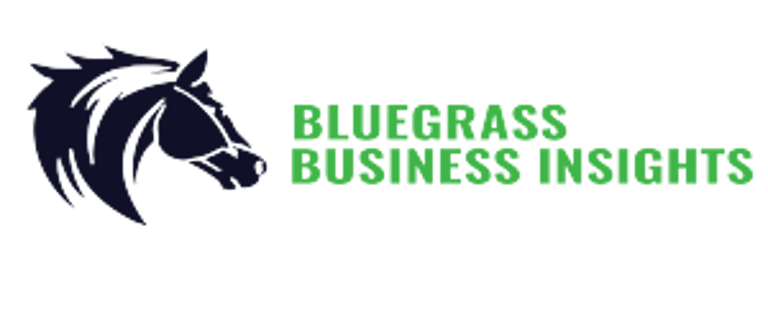A 5-Step AI-Powered Blueprint for Unbeatable Offers
Imagine having a repeatable system that takes you from fuzzy ideas about your market to a crystal-clear, revenue-driving offer—complete with a launch plan you can execute with confidence. By pairing fill-in-the-blank AI prompts with Hormozi’s M.A.G.I.C. framework, you can transform what once took weeks of guessing into minutes of precision. Here’s how to do it in five structured stages.
ARTIFICIAL INTELLIGENCE
Jacob Rose
6/20/20255 min read


Imagine launching your next service with the confidence that every word you speak resonates deeply with your perfect client—and every step of your rollout is pre-mapped for maximum impact. Too often, business owners cobble together generic offers and hope something sticks, only to watch conversions stall. In this guide, you’ll discover a five-stage, AI-powered process that takes you from raw market intel to a rock-solid launch plan: we’ll mine OpenAI for competitive insights, build a crystal-clear customer avatar, unearth the real pain points holding your prospects back, craft an unmissable Hormozi M.A.G.I.C. offer, and assemble a 30-day go-to-market blueprint. Best of all, each step uses fill-in-the-blank prompts so you can generate actionable outputs in minutes—no guesswork, just results.
1. Deep Competitive Research with OpenAI
Before you can stand out, you need to know what “everyone else” is doing. Start by crafting AI prompts that harvest insights from your top competitors: service features, pricing tiers, client feedback, and positioning gaps. For example, ask AI to “Summarize the strengths and weaknesses of the three leading [your industry] providers, highlighting at least two service gaps.” In minutes you’ll have a concise brief that reveals white-space opportunities—whether it’s faster turnaround, deeper guarantees, or more personalized support.
Example Prompt
Act as an experienced market research analyst and conduct a comprehensive analysis of the [Industry/Product/Service] market in [Geographic Area], beginning with a 250–300-word executive summary that synthesizes market size and projected growth rate, the top five trends shaping the market over the next five years, key customer segments (e.g., [Demographic 1], [Demographic 2]) and their buying behaviors, the competitive landscape (including the top three competitors and their market share), a SWOT analysis of opportunities and threats specific to [Industry/Product/Service], and any regulatory, technological, or economic factors that could impact growth. After your summary, present clearly labeled sections for each of these elements—Market Size & Growth, Top 5 Trends, Key Customer Segments & Behaviors, Competitive Landscape, SWOT Analysis, and Regulatory/Technoeconomic Factors—so that each area of your research is easy to navigate and reference.
2. Build Your Ideal Customer Avatar
Defining your ideal customer avatar is the cornerstone of every successful marketing strategy because it transforms vague assumptions into precise, actionable insights. When you know exactly who you’re speaking to—down to their demographics, daily challenges, goals, and decision-making criteria—you can tailor your messaging, offers, and channels to resonate deeply with their specific needs. This focus not only maximizes engagement and conversion rates but also streamlines your marketing spend by eliminating wasted effort on audiences who aren’t a fit. Additionally, a well-crafted avatar guides product development, service improvements, and customer support, ensuring every aspect of your business aligns with the people most likely to become loyal, long-term clients.
With market context in hand, zero in on the exact person you serve. Use a prompt like:
"I run a [type of service] business. My ideal customer is [gender], [age range], working in [occupation/industry]. Provide a detailed avatar that covers their demographics, psychographics, daily routines, goals, challenges, decision drivers, and preferred communication channels.
The AI’s response becomes your avatar dossier—a one-page profile you’ll reference for every headline, email, and ad. When you speak directly to their world (morning frustrations, afternoon bottlenecks), your messaging resonates on a visceral level.
3. Uncover & Prioritize Pain Points
Knowing what keeps your prospect up at night is critical. Generate survey and interview questions via AI to unearth real frustrations. Then ask AI to “List the top four pain points for my avatar, describe their business impact, and explain why existing solutions fail.” You’ll end up with a ranked pain-point map—complete with hard numbers (hours lost, revenue leaked) and emotional triggers—that becomes the backbone of your copy.
Using the avatar you just created, list the top four pain points they face in their day-to-day operations; describe the business impact of each pain point, and explain why typical solutions haven’t solved these issues."
4. Craft an Irresistible M.A.G.I.C. Offer
The M.A.G.I.C. offer framework—coined by entrepreneur and investor Alex Hormozi—helps business owners craft irresistibly clear, high-value propositions by systematically defining five elements: a compelling Magnet (the hook that grabs attention), a precise Avatar (the specific customer you’re speaking to), a bold Goal (the outcome you promise), an Interval (the timeframe for achieving it), and a fitting Container (the format or delivery vehicle of your offer, such as a “Blueprint,” “Workshop,” or “Accelerator”). Alex Hormozi, best known for founding Acquisition.com and authoring the best-selling book $100M Offers, built this framework from years of scaling service businesses to eight-figure revenues. By forcing you to articulate exactly who you serve, what transformation you deliver, and when clients can expect results, the M.A.G.I.C. formula turns vague marketing claims into crystal-clear, compelling offers that prospects can’t ignore.
Example Prompt
I run a [type of service] business. My ideal customer is [gender], [age range], in [occupation/industry], who currently [describe their struggling “before” situation], causing them to [negative impact]. Using Hormozi’s M.A.G.I.C. framework, craft an offer named “[Timeframe] [Magnet] for [Avatar]: [Goal] in [Interval].” Then, in two to three sentences, describe the transformation (before vs. after), list three core deliverables—such as [Deliverable 1], [Deliverable 2], and [Deliverable 3]—one bonus item [Bonus Item], and a guarantee statement [Guarantee Statement].
I run a [type of business] business. My ideal customer avatar is [describe Avatar]. Choose one of the M.A.G.I.C. offer ideas from above and refine it into a flagship offer by providing the full offer name, three core deliverables ([Deliverable 1], [Deliverable 2], [Deliverable 3]), one bonus item ([Bonus]), and a compelling guarantee statement ([Guarantee]). Then outline a [duration]-stage delivery plan titled “[Offer Name]” for my avatar: for each stage, list the stage title, the key activities or modules included, and the specific outcome participants will achieve by the end of that stage.
5. Map Your Delivery & Launch Plan
In the Map Your Delivery stage, you’ll transform your flagship offer into a clear, actionable rollout plan. Start by using an AI prompt to sketch out each stage of your program—giving every phase a concise title, outlining the key activities or modules it contains, and specifying the exact outcome participants will achieve. Next, build your marketing funnel by matching content assets (blog posts, social updates, case studies, webinars, emails) to the Awareness, Consideration, and Decision phases. Then generate a 30-day social-media calendar—posting three times per week—with dates, themes, caption hooks, and CTAs that guide prospects back to your offer. Finally, draft a four-email nurture sequence, complete with subject lines, opening hooks, core benefits, and a compelling call to action in each message. By following this fill-in-the-blank, AI-driven process, you’ll end up with a fully mapped delivery and launch plan—ready to execute without any guesswork.
Program Outline: Ask AI to “Outline a [duration]-stage delivery plan titled ‘[Offer Name]’ for my avatar: list each stage’s title, key activities, and outcomes.”
Content Funnel: Map assets (blogs, case studies, social posts, webinars, emails) across Awareness, Consideration, and Decision.
Social Calendar: Use a prompt like “Create a [Month] social calendar with three posts per week: date, theme, caption hook, and CTA to [URL].”
Email Sequence: Generate a four-email nurture series with subject lines, opening hooks, benefits, and CTAs.
The AI-generated calendar and sequence give you a turnkey, 30-day blueprint—no guessing, no gaps.
Why This Works
This five-stage, AI-powered approach combines rigorous research, crystal-clear customer insights, and a proven offer framework—then seamlessly maps it into an actionable launch plan. By leveraging fill-in-the-blank prompts, you eliminate guesswork and ensure consistency across every step, from uncovering market gaps to defining your Hormozi M.A.G.I.C. offer and mapping out content flows. The result is speed (generate deep insights in minutes), clarity (every module, message, and metric is predefined), and focus (you concentrate on strategic decisions, not formatting). This repeatable process not only accelerates your time to market but also maximizes conversion by speaking directly to your ideal client’s needs and guiding them

Empowering small businesses with automation and AI.
Contact
Subscribe
info@bluegrassbusinessinsights.com
804-536-8511
© 2025. All rights reserved.


